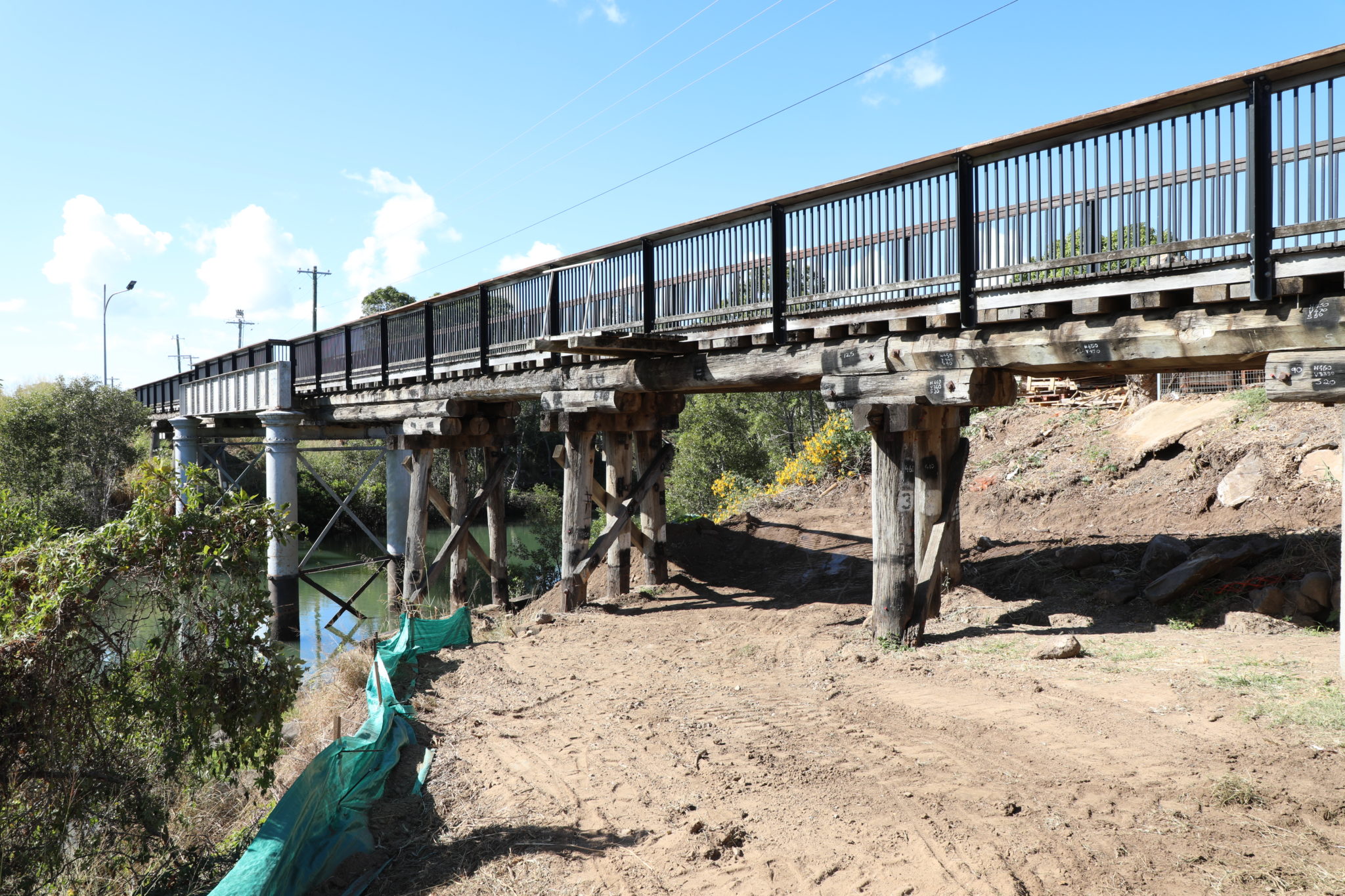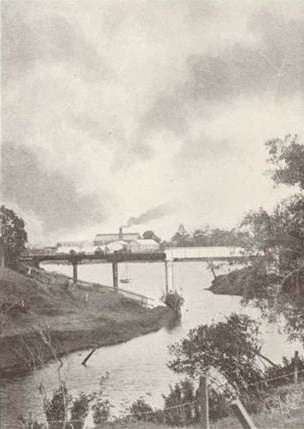
Restoration work will soon be underway to preserve the heritage listed Saltwater Creek Railway Bridge, which is the second oldest of its kind still standing in Queensland.
A complex array of steel and timber components that have stood the test of time, the bridge’s most unique aspect is its steel structure and, in particular, the screw piles on which the bridge stands.
An Australian Heritage Database register of national estate statement of significance said the bridge formed part of a short branch railway opened in 1894.
“The main span is a single metal plate girder span of 15.2m, flanked by timber girder approaches,” the statement said.
“The main piers are cast iron cylinders on screw piles, a form of construction common at the time, but of which only a few examples remain.
“This bridge is a good example of short span railway construction of the time.”
According to the Queensland Heritage Register, Saltwater Creek Railway Bridge was constructed as a private railway to government standards.

“Agitation for a railway from Bundaberg to the Woongarra district began in the 1880s and a line was surveyed during 1889-91,” the register said.
“In the absence of funds for government construction and with the support of the railway commissioners, Robert Cran of the Millaquin sugar refinery near Bundaberg, was authorised by an Act of Parliament in 1892, to construct a private railway from Bundaberg to the sugar refinery.
“Plans were prepared for the bridge in 1893.”
A contract for construction was awarded to James Overend in January 1894 and the railway was opened for traffic on 9 July 1894.
It was acquired by the State Government in 1912 and connecting railways were also transferred to state ownership in 1917 and 1918.
It’s been listed on the State Heritage Register since 1992.
“In 1965 plans were prepared for strengthening the bridge with steel girders suitable for a 12 ton axle loading,” the register said.
“This was subsequently undertaken with re-used girders from the Gold Coast.”
Bundaberg Regional Council Saltwater Creek Railway Bridge restoration project manager Rhiess Honor said Council took ownership of the bridge in 2007.
Later in that same year it was converted to a pedestrian and cycle bridge.
“A deck surface was laid over the top of the bridge to make it safe for pedestrian and cycling use,” Rhiess said.
“Our rehabilitation works will initially focus on restoration and replacement of the required timber elements of the bridge.”
To restore such an historically significant structure, Rhiess said a significant amount of research and expert inspections of the Saltwater Creek Railway Bridge were undertaken.
“For the last 12 months we’ve been doing an intensive inspection and reporting program,” he said.
“We engaged consultant archaeologists and engineers with relevant experience in heritage structures of this nature.
“Through consultation with these experts we have developed a scope of work that identifies all of the individual components and associated fixtures that require replacement. The proposed scope was approved by the State Government for construction.”
With a qualified timber bridge crew on staff, Rhiess said Council would be able to undertake the initial timber restoration stage of the project.
“Timber bridges are becoming less common so to have that sort of skill in house is very handy,” Rhiess said.
“A lot of the sleepers need replacing, along with piers and girders. We will be sourcing as much of this timber from our stockpile of recycled bridge timbers as possible.”
Work will be underway shortly with the bridge to be closed throughout the works.
The current stage of the Saltwater Creek Railway Bridge restoration project is being undertaken with support from the Queensland Government COVID Works for Queensland program.





Wouldnt Bundy benifit more from halting this endevour for now and for money to be spent doing something to house the homeless ?
Cheap donga type on the old caravan site over north …….and i mean cheap not the rediculous price that was charged before for the dongas .?